All rights are reserved under the copyright of Yasuyuki Ayukawa (2023)
I am visiting companies challenging the global market with Japanese skills, Japanese quality, and Japanese craftmanship based on the tradition. I don’t know if the world has overtaken Japan or if Japan has declined, but in recent years, it is said that Japan’s position in the world is declining in various parts such as economy, society, and the quality of life. But is it really so? Japan still has world-class technology, traditions, and culture, and the value of these has been recognized in other parts of the global market thanks to the efforts of many companies pioneering the market in many countries. Furthermore, there are also new companies taking on the challenge with products and technologies, with their confidence and pride, to the world. In this series, I would like to introduce how such companies are challenging the global market.
The 2nd. issue is for
Ide Sake Brewery
(https://www.kainokaiun.jp/en-index.html)
This second issue introduces the efforts of Ide Sake Brewery, Yamanashi, located on the northern foot of Mt. Fuji. Ide Sake Brewery has worked on Sake for more than 170 years, and moreover has much longer history as the residents of sounding Mt. Fuji. Ide Sake brewery questions its Sake in the global market, as one of the crystallizations of its long history and tradition. That’s how I received it. Not “selling more”, but “showing deeper”. Now let me Introduce Ide Brewery’s dissemination of the traditional Japanese culture to the global markets
In Part 2, I introduced how Ide Sake Brewery, not pursuing scale and sticking to tradition, can make its Sakes known to customers in the global market, and as a trigger to generate such reactions, Ide Sake Brewery is focusing on sake brewery. In this final part, I will introduce the actual items by Ide Sake Brewery for global market, and the actual commitment to sake brewing process by Ide Sake Brewery.
G.I. Yamanashi
In Vol. 2, I introduced that Ide Sake Brewery places great importance on brewery tours as an entry to reinforce the brand equity as by accumulating on an individual basis. On the other hand, Ide Sake Brewery is also thinking about ways to increase its name recognition on a non-personal basis, and in that respect, Ide Sake Brewery is thinking about entering contests every year to increase exposure.

By the way, what kind of Sakes does Ide Sake Brewery recommend as the “Crystal of Tradition” among the initiatives to the global market?
Of course, “Junmai Daiginjo Furoku,” could be a good option for its dry and lean taste, as fruit of the severe winter on the northern foot of Mt. Fuji: actually this “Junmai Daiginjo Furoku,” won an honourable mention in the Junmai Ginjo category of the Tokyo Regional Taxation Bureau’s Sake Awards in 2020, and start to obtain a certain and increasing number of fans in markets outside Japan such as Singapore. On the other hand, Ide Brewery is particular about Yamanashi Prefecture’s certification of origin, G.I. Yamanashi (Geographical Identification, Yamanashi) for the items to global market.
Customers are also particular about the certification of origin of wines, represented by Appellation d’Origin Contrôlée in France, as a way to protect the brand. Ide Sake Brewery would like to send out the “origin of Yamanashi” to the global market. By doing so, Ide Sake Brewery believes that people familiar with wine culture will be able to become more attached to, and sympathised with these Sake with G.I. Yamanashi.
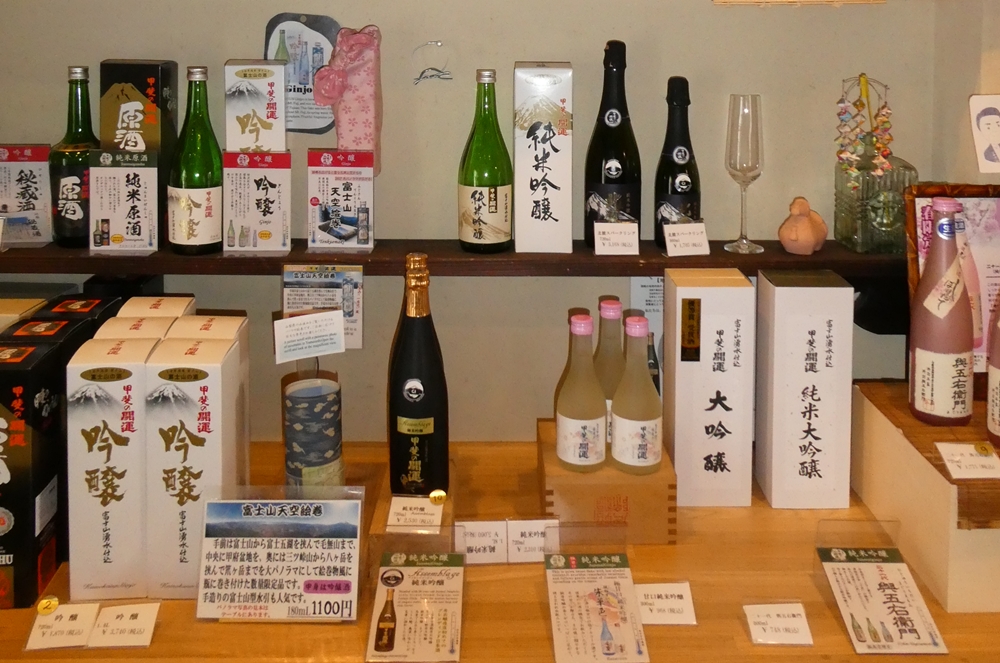
As Sake with G.I. Yamanashi, Ide Sake Brewery recommends “Kai no Kaiun Junmai Ginjo Hokuroku Sparkling” to global market. This is a sparkling sake having been launched 5 years ago, with second-fermented process.
Sparkling alcoholic beverage such as beer, champagne, and sparkling wine are certainly present in the alcoholic beverage market of every country. Sparkling is inherent in brewing as the results of fermentation process of alcoholic beverages, which are present everywhere.
Considering sake as an alcoholic beverage to enjoy with a meal, Ide Sake Brewery would like customers to finally enjoy still Sake, no sparkling. However, Ide Sake Brewery prepares this Sparkling Sake for customers who haven’t yet been familiar with Sakes, as a stepping stone to get there we have prepared sake for firing as.
In global market, especially in the case of exports, Sakes’ prices can be inevitably high, and for this reason wealthy people are supposed to have more change to enjoy Sakes from Ide Sake Brewery. Therefore, Ide Sake Brewery Sakes would like to make sure the concept of those Sakes to be solid, not cheap. In that respect, this Hokuroku Sparkling is a clean and fragrant sake as the fruit of the clear soft underground water of Mt. Fuji, and the cold climate in severe winter in the region
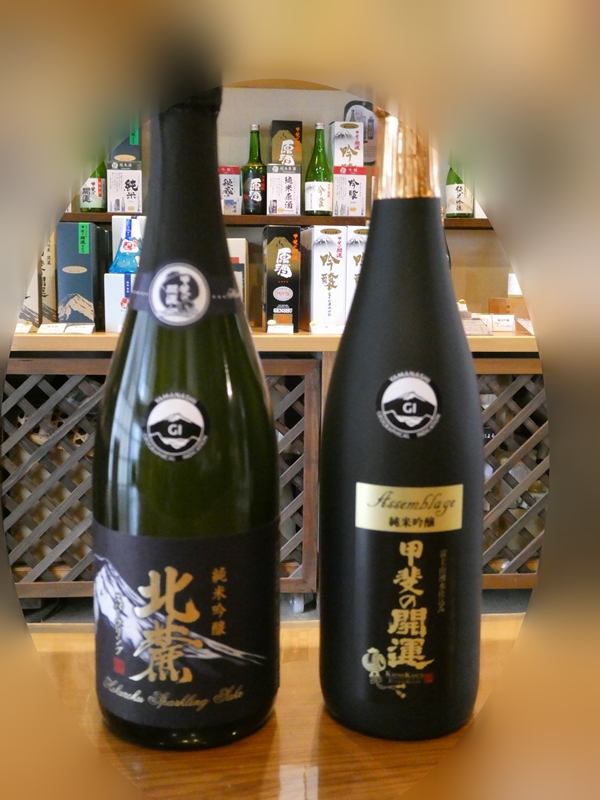
The other is “Kai no Kaiun Assemblage”. Such wealthy people as having more chancesto enjoy Ide Sake Brewery’s Sakes are also supposed to have enjoyed wine culture in every country. As an alternative to wine, Ide Sake Brewery challenges “assemblages”, i.e. blended in Japanese Sake, finally Ide Sake Brewery achieve to obtain very complex taste for Sake.
Commitment to
sake brewing
Then, what is Ide Sake Brewery’s focus on sake brewing as a “crystal of Tradition”?
“Water” and “severe winter” are the core elements of sake brewing at Ide Sake Brewery.
About water: all of Ide Sake Brewery’s Sakes are brewed with underground water from Mt. Fuji. After all, Fuji underground water could easily conjure up an image of good water for Japanese, and for people in global market under the name of a World Cultural Heritage Site
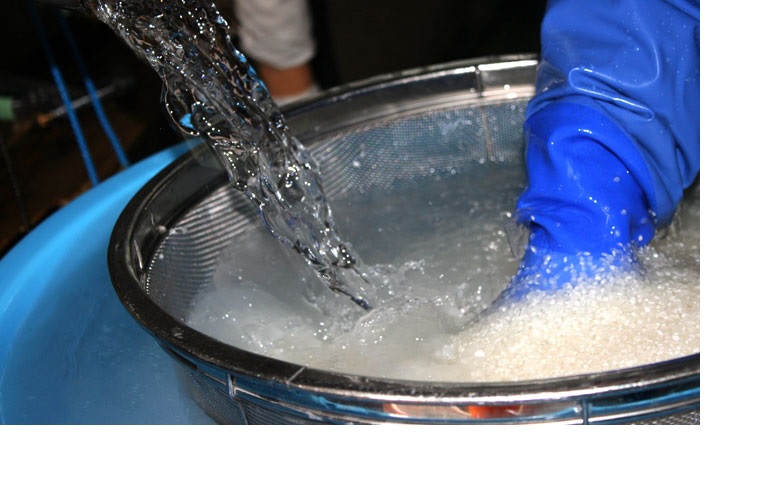
Above all, underwater of Mt. Fuji used at Ide Sake Brewery is extremely soft, and is featured to facilitate achieving excellent clean and highly fragrant taste with the reduction of the off-flavours to the absolute minimum.
Then, “Severe Winter”. At Fuji Hokuroku, where Ide Sake Brewery brews sake, the winter is severely cold especially during the brewing season. And such low temperature makes it easier for fermentation to proceed slowly, and to finally create a gorgeous scent.
Here is the basic concept of designing Sakes’ taste by Ide Sake Brewery: Ide Sake Brewery takes the soft underground water of Mt. Fuji, and the severe winter climate, both of which are gifts, as core element to make up Sakes, and is particular about Sake where cleanness and high fragrance are maximumly drawn out. Based on those features of taste of Sake as the fixed core, Ide Sake Brewery uses variate and combine rice, yeast, rice malt, and fermentation process as parameters, in order to give rich variety in the taste among each brand.
WEB
sake brewery tour
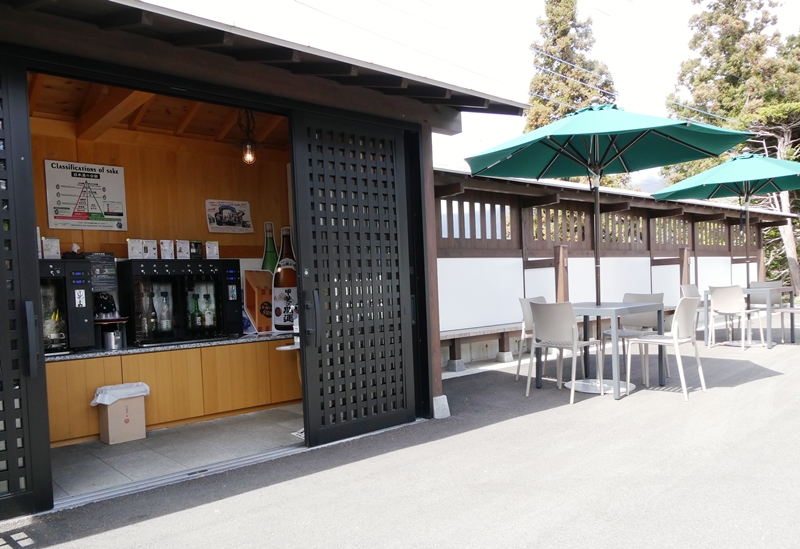
As introduced in part 1, Ide Sake Brewery brews sake by mixing traditional methods with modern processes under the motto of “learning from the past to know the new “. Ide Sake Brewery sticks to traditional methods where human labour is required, and use machines to improve efficiency where it is not necessary. From such a sake brewery tour, we will introduce the essence on the web!
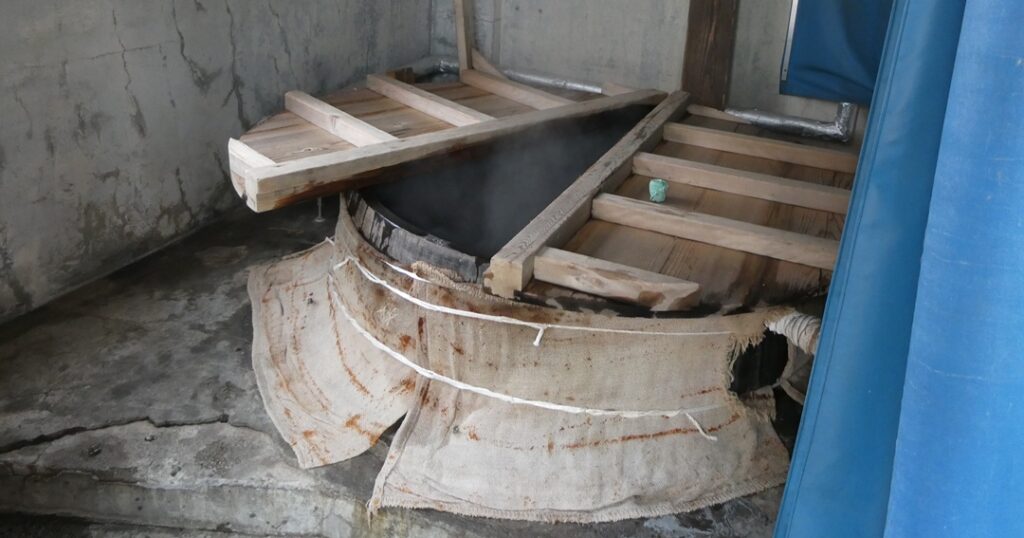
At first, Sake rice steaming kiln
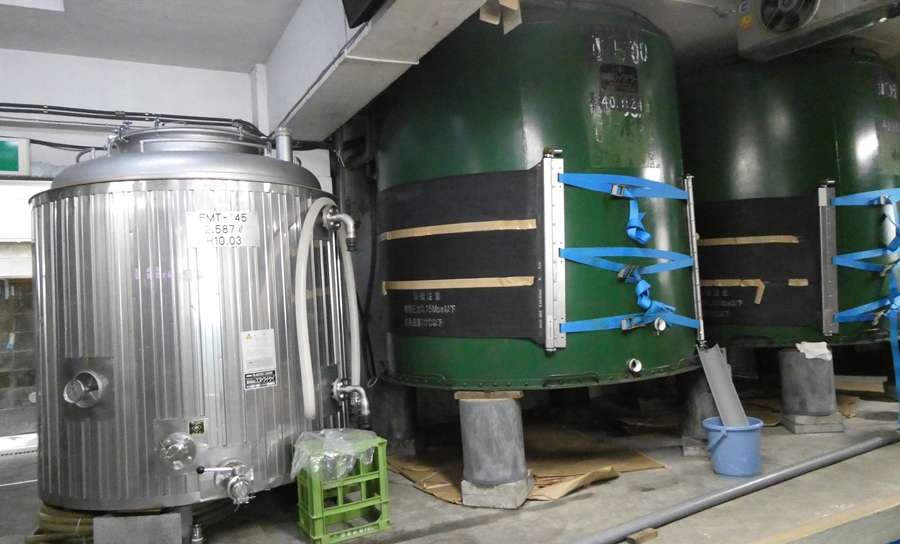
And next, this is a brewing tank.” As I mentioned earlier, Ide Sake Brewery, which is particular about the quality of its sake, with cleanness and high fragrance, ages Sakes for about half a year on average so that the acetic acid component does not increase due to over-resting.
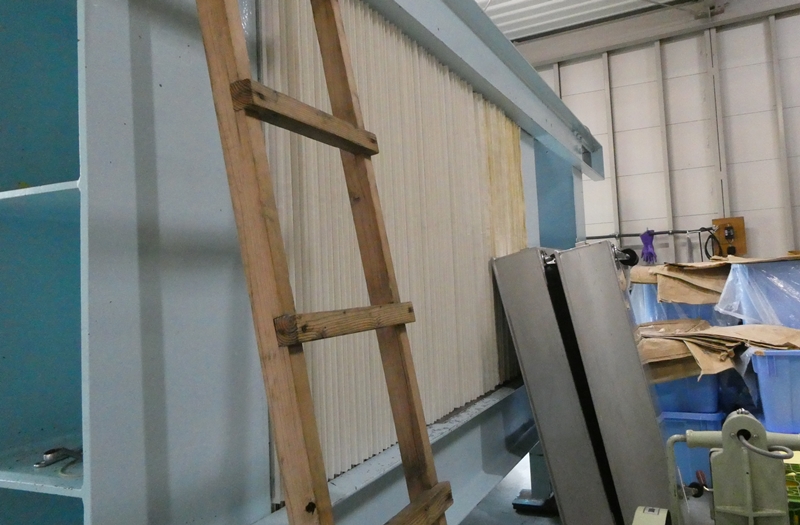
Next is the filtration device. This machine is equipped with a bag-shaped filter cloth suspended by iron plates on both sides, and an iron plate with a rubber disc is placed inside. While compressing the entire bellows with hydraulic pressure, air is put into the rubber part and further compression is applied.
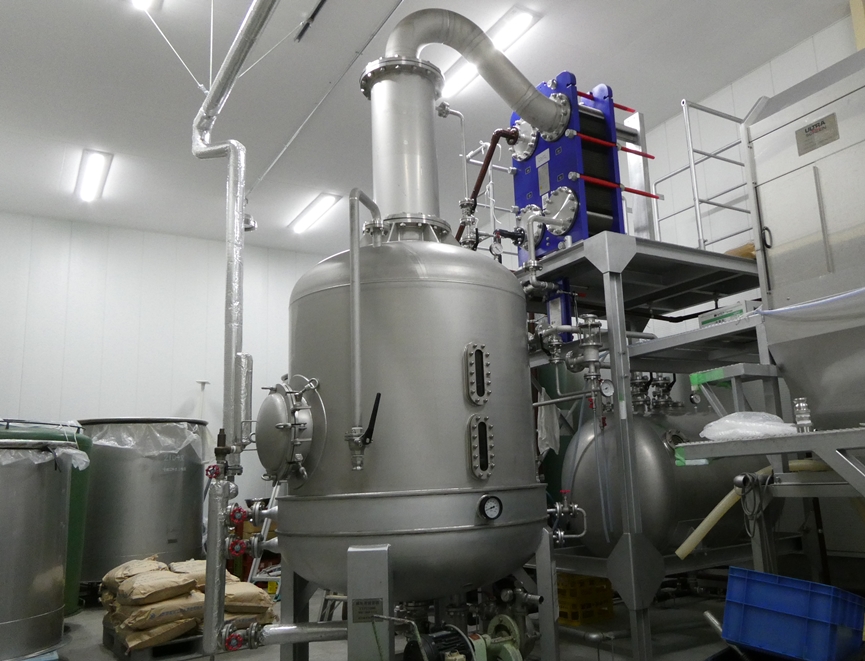
Here is the whiskey Fuji Hokuroku Distiller. It has been in operation since 2020. After brewing, the distiller shown in this photo is used for two-stage distillation. Distilled to 25 degrees on the first stage and 60 degrees on the second stage to finish the malt.
Enzymes are produced in the malted barley, and when saccharification has progressed to some extent, the barley is dried by heat to stop growth to retain sugar and enzymes. Brewing is to be done in this state. This unblended whiskey is aged in barrels and then blended with Grains for commercialization. At Ide Sake Brewery, the grain is made from rice, aiming for a whiskey flavour unique to sake breweries. Ide Sake Brewery will brew for about 5 more years and deliver it to everyone!
“Learning from the Old”
I have heard that Ide Brewery is committed to brewing sake by “learning the past to know the future” and Ide Sake Brewery emphasised especially in the part of “learning past” in terms of triggering inbound, which is the concept of approaching the global market.
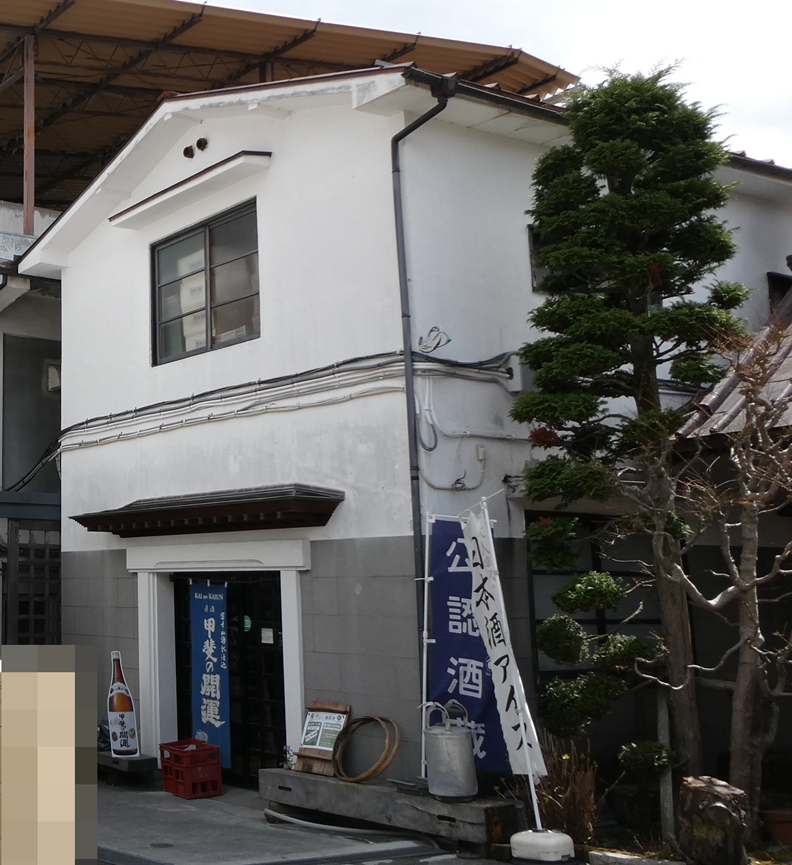
You can enjoy Japanese sake while looking out at the dry landscape garden while being watched over by the folding screen of Yoritomo’s hunting session on the foot of Mt. Fuji, in the room of the guesthouse built in Edo-era….
Ide Sake Brewery’s Sakes, which has a lean yet fragrant, authentic taste, could be enjoyed uniquely here with the perfect match for these cultural elements, I think. Even if you bring home Sakes, you cannot physically take out the garden or tatami room.
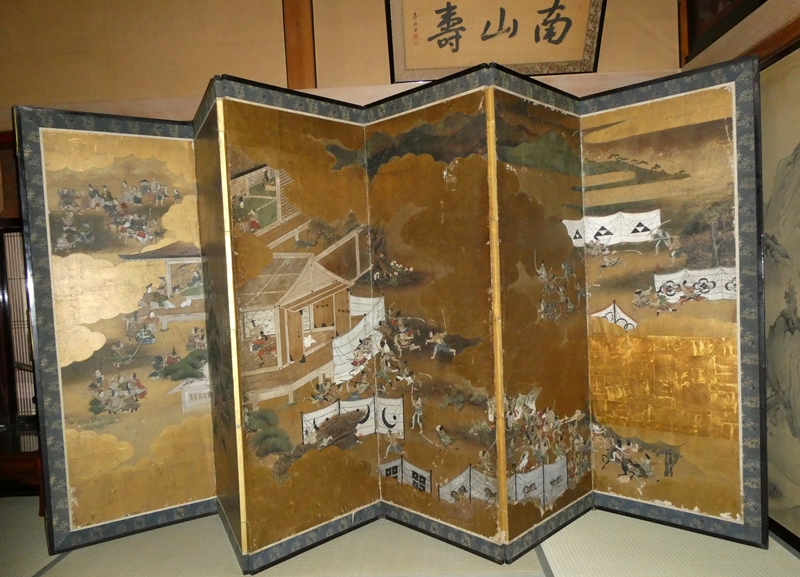
Visitors from overseas are encouraged to take this cultural experience home with them as a memory, and, if possible, visit again to experience it again. It is through this repetition that Ide Brewery’s sake is recognised and create fans in the global market. It’s a very steady effort, but I’ve come to understand that this is Ide Sake Brewery’s own way of doing things that major breweries can never imitate.
The registration of Mt. Fuji
as a World Heritage Site
is a “Cultural Heritage” registration
as an object of worship,
and a source of artistic inspiration.
In case of Ide Sake Brewery’s
sake brewery tour,
it also allows customers
from overseas
to experience
traditional Japanese culture
and spread it to the world,
with enjoying Sakes as
“Crystal of Tradition”
by themselves.
It could be said
“The direction is same”!
See you in the next issue!

All rights are reserved under the copyright of Yasuyuki Ayukawa (2023)
